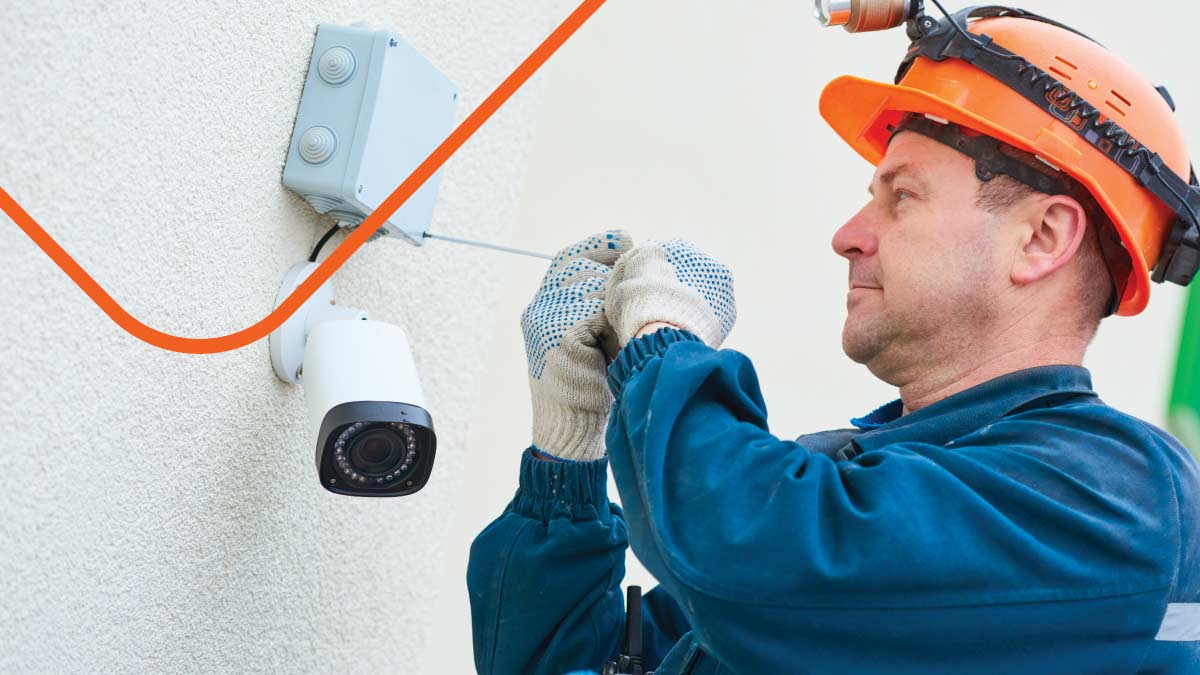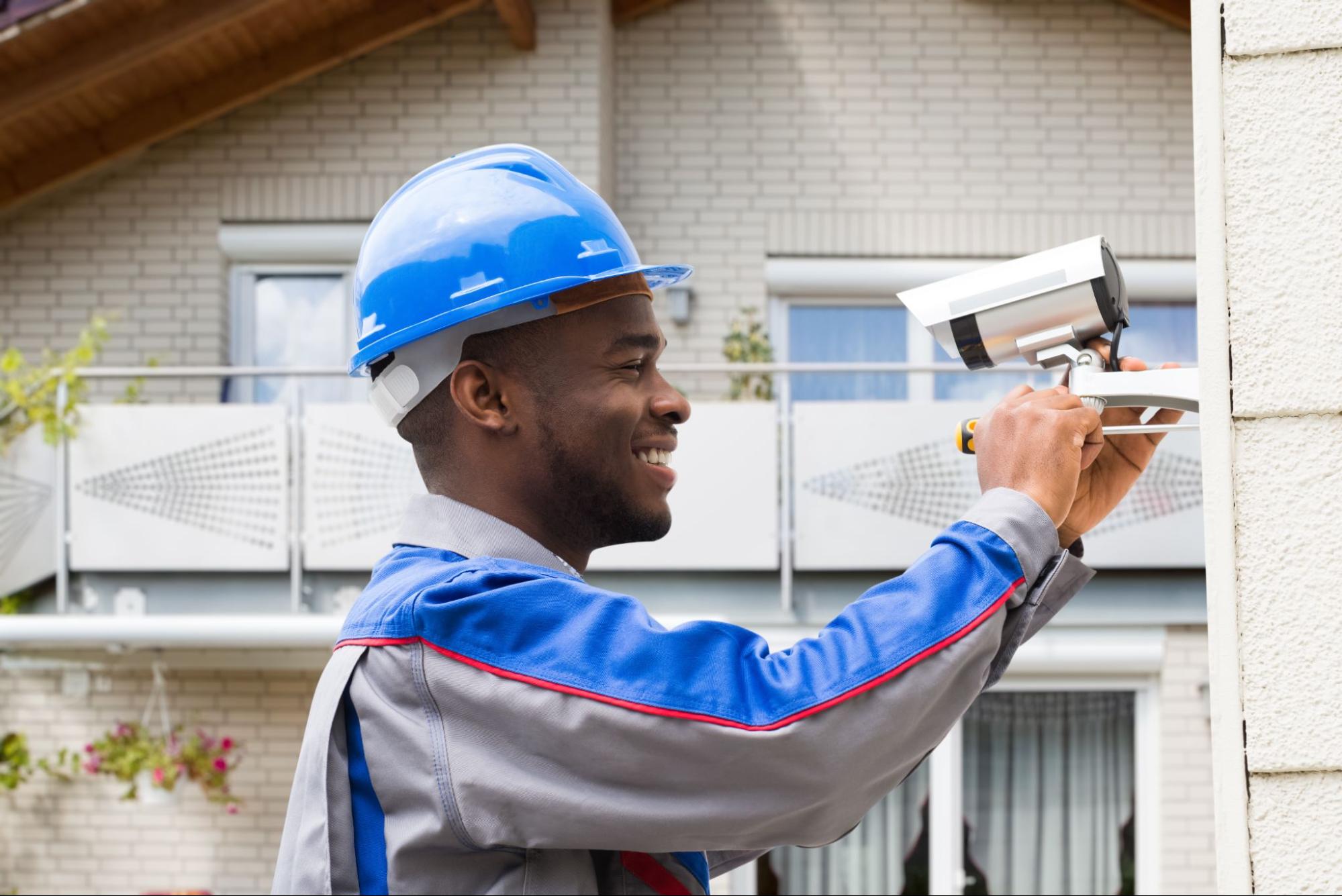With the increasing instances of theft, vandalism, and other security breaches, organizations recognize the need for robust security measures. One such measure that has gained tremendous popularity is the installation of commercial security cameras. These cameras act as a powerful deterrent to potential criminals and provide valuable evidence in the event of an incident.


Understanding the importance of commercial security camera installations
Commercial security camera installations play a crucial role in safeguarding companies. They act as your company’s eyes and ears, constantly monitoring and recording activities within and around your premises. By investing in a comprehensive security camera system, you are taking proactive measures to protect your assets, employees, and customers.
Moreover, commercial security camera installations are not just about surveillance; they also serve as a powerful deterrent against potential threats. Visible cameras can significantly reduce the likelihood of criminal activities such as theft, vandalism, and trespassing. This added layer of security can give company owners peace of mind, knowing that their property is being actively protected.
The role of security cameras in business
Commercial security cameras serve a dual purpose of reducing security risks and enhancing productivity. These cameras are a visual deterrent, discouraging potential wrongdoers from committing crimes on your premises. Moreover, they help capture suspicious activities, providing vital evidence for investigations and legal proceedings.
Furthermore, security cameras can also improve operational efficiency within a company. By monitoring employee performance and customer interactions, managers can identify areas for improvement and implement targeted training programs. This data-driven approach enhances overall productivity and fosters a culture of accountability and professionalism among staff members.
Key benefits of commercial security cameras
Installing security cameras in your company offers a multitude of advantages. Firstly, they provide constant surveillance, ensuring you can monitor your property even when you’re not physically present. This allows for prompt responses to emergencies and potential threats. Additionally, security cameras improve employee accountability and discourage internal theft or misconduct. Promoting a safe and secure environment instills trust and confidence in both your employees and customers, leading to an improved company reputation.
Another key benefit of commercial security cameras is their role in risk management and insurance purposes. Many insurance companies offer discounted premiums to companies that have robust security measures in place, including surveillance systems. In the event of an incident, having video evidence from security cameras can streamline the claims process and provide irrefutable proof of events, potentially saving companies time and money.
Essential elements of a successful security camera installation
Security camera installations play a vital role in safeguarding companies and properties against potential threats. Beyond just providing surveillance, they deter criminal activities and offer valuable evidence in case of incidents. To keep your security camera system functioning optimally, it’s crucial to consider various factors during the installation process.
A successful security camera installation requires careful planning and attention to detail. Here are the key elements that contribute to an effective setup:
Choosing the right security camera system
Each company has unique security requirements, so it’s essential to select a security camera system tailored to your specific needs. Consider factors such as the size of your premises, the required coverage level, and the specific features that align with your security goals. Modern advancements in security technology offer a wide range of options, including high-definition cameras, night vision capabilities, and remote access features for real-time monitoring.
Moreover, assessing whether your security camera system needs to be wired or wireless based on scalability, flexibility, and ease of installation is important. Wireless systems provide greater flexibility in camera placement but may be susceptible to signal interference, while wired systems offer a more stable connection but require extensive cabling.
Strategic placement of security cameras
The strategic placement of security cameras is key to maximizing their effectiveness. Identifying high-risk areas such as entrances, exits, parking lots, and storage areas is essential. Install the cameras at appropriate heights and angles to capture clear footage. Additionally, consider factors like lighting conditions, potential obstructions, and weatherproofing for uninterrupted surveillance coverage.
Regular maintenance and monitoring of security cameras are also key to their longevity and performance. Routinely checking for any signs of damage, adjusting camera angles as needed, and ensuring proper connectivity to the recording system are essential to uphold the integrity of your security setup.
Integration with other security systems
Integrating your security camera system with other security measures is crucial for holistic security. This includes linking cameras to access control systems, alarm systems, and monitoring stations. By integrating these systems, you can enhance the overall security infrastructure and streamline the management of security incidents. Furthermore, the integration allows for centralized control and monitoring, enabling quick response to potential threats and seamless coordination between different security components.
Regularly reviewing and updating your security camera system to keep up with evolving security needs and technological advancements is essential to staying ahead of potential risks and vulnerabilities. By investing in a comprehensive security strategy that incorporates the latest innovations and best practices, companies can create a robust security environment that effectively protects assets, employees, and customers.

The installation process of commercial security cameras
Now that we’ve covered the importance and elements of a successful security camera installation, let’s examine the installation process itself:
Pre-installation considerations
Before installation, conduct a thorough assessment of your premises. Identify the areas that require surveillance and determine the number and types of cameras needed. Choose high-quality cameras that are weather-resistant and provide excellent video resolution.
Consider the lighting conditions in the areas where the cameras will be installed. Optimal lighting is important for capturing clear and detailed footage. Consider investing in cameras with infrared capabilities in low-light areas for enhanced night vision. Additionally, assess the power source options near the camera locations to ensure seamless installation.
Step-by-step installation guide
The installation typically involves mounting the cameras, running cables, connecting them to the central monitoring system, and configuring the software. Following manufacturer instructions and getting professional help when needed promotes accurate installation.
When mounting the cameras, position them at the correct angles to capture the desired field of view. Consider factors such as obstructions, glare, and potential vandalism when determining the placement of the cameras. Use appropriate mounting hardware to secure the cameras in place and prevent tampering.
Post-installation checks and maintenance
Once the cameras are installed, conduct thorough checks to ensure everything functions properly. Test the cameras, review the video footage, and adjust any settings as required. Regularly inspect and clean the cameras to maintain optimal performance.
Establish a maintenance schedule to routinely check the cameras, cables, and connections for any signs of wear or damage. Update the camera firmware and software regularly to ensure they have the latest security features and performance enhancements. By staying proactive with maintenance, you can prolong the lifespan of your security cameras and continuously protect your premises.
Overcoming common challenges in security camera installation
While security camera installations offer immense benefits, they can also pose challenges. Understanding and addressing these challenges supports a successful installation:
Dealing with technical issues
Technical glitches and compatibility issues can arise during the installation process. To overcome these challenges, work with experienced professionals who can troubleshoot problems and provide timely support. Regular maintenance and software updates are also crucial to address any technical hiccups.
Furthermore, when dealing with technical issues, it’s important to consider the network infrastructure supporting the security cameras. Bandwidth limitations, network congestion, and data storage capabilities can all impact the cameras’ performance. Working with IT specialists to optimize network settings and support seamless data flow is essential for a robust security system.
Ensuring compliance with privacy laws
As you install security cameras, ensuring compliance with privacy laws and regulations is important. Properly communicate the presence of cameras through signage and avoid installing cameras in private areas. Consult legal professionals to promote adherence to privacy guidelines.
In addition to privacy laws, cybersecurity measures to protect the data captured by security cameras are crucial. Implementing encryption protocols, secure access controls, and regular security audits can safeguard sensitive information from unauthorized access or breaches.
Addressing environmental constraints
Different environments pose different challenges for security camera installations. Harsh weather, extreme temperatures, and varying light conditions can impact camera performance. Choosing cameras designed for outdoor or challenging environments mitigates these constraints and supports reliable functionality.
Moreover, integrating environmental sensors with the security cameras can provide real-time data on weather conditions, allowing for proactive adjustments to camera settings. This proactive approach enhances the longevity of the cameras and provides continuous surveillance coverage, even in the face of environmental challenges.
Conclusion
Successful commercial security camera installations are crucial for protecting companies against security threats and boosting overall safety. By understanding the importance of security cameras, focusing on essential elements, following a systematic installation process, and addressing common challenges, you can create a robust security infrastructure for your organization. Invest in an effective security camera system today and safeguard your company for a secure tomorrow.
Are you looking to install or service a security camera system for your company? Schedule an introductory call with Field Nation today and discover why we’re the best solution for connecting with thousands of skilled field service technicians. With our innovative methods and ongoing investment in network vetting and project planning tools, we’re here to help your company thrive.








